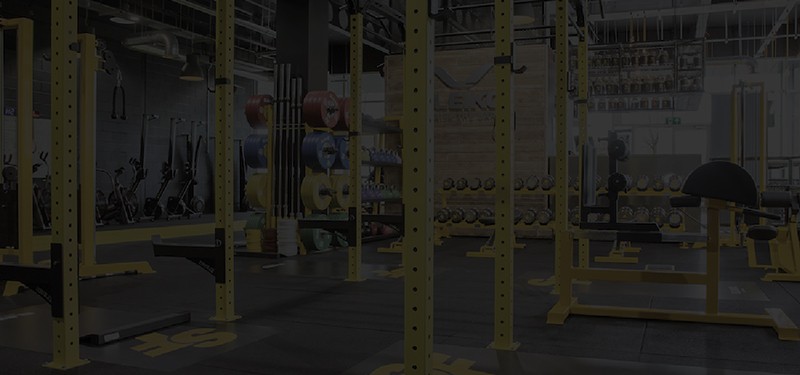There is little doubt that cardio exercise is important for both your health and body composition but, and let’s be honest here, what most people do for cardio is just plain boring!
Typically, cardio involves doing steady-paced activities such as cycling or jogging at around 60-percent of your maximum heart rate in what is euphemistically called your “fat burning zone”. And while it’s true; at that level of intensity you are mainly using fat for fuel, you aren’t using much of it – around 100-calories per ten-minutes of exercise at most. That means that to burn a single pound of fat, you’ll need to clock up around 350-minutes of exercises which is equal to running around 30-miles! Like the man says “Ain’t nobody got time for that!”
In addition, there is some evidence that suggests that excessive 60-percent MHR cardio elevates cortisol levels – cortisol being a catabolic (muscle destroying) hormone. Too much cortisol can interfere with gaining muscle and strength and may actually cost you muscle which, as any hard-charging exerciser knows, is not a good thing.
If you like jogging or are training for an endurance event then these downsides come with the territory and you’ll just have to live with them but if you want to save time and preserve muscle while building fitness and burning fat, you should consider ditching the slow-paced cardio and replacing it with some high intensity interval training – HIIT for short.
Interval training involves repeated periods of working very hard for a brief time and then resting, for example sprinting for 20-seconds and then walking for 70-seconds. Six to ten-repeats later your workout is complete and you are free to hit the showers!
Very brief but intense workouts like this trigger something called EPOC – short for Excess Post-exercise Oxygen Consumption or what we used to call oxygen debt. In a nutshell, sprinting and similarly intense activities result in the production of lots of lactic acid – the stuff that makes your muscles burn. It takes time, oxygen and energy for your body to deal with lactic acid and this results in an elevated metabolism which lasts for as long as 24-hours after exercise. HIIT burns not only a lot of calories while you are exercising but also means you burn more calories in the aftermath – two fat burning workouts for the price of one!
To put it another way – which uses more energy, revving your car to the red line or cruising along at 30-mph? And which one results in a hotter engine that then takes longer to cool back down? HIIT is the exercise equivalent of driving your car as hard as you can – not good for your pocket for sure but exercising this way means you use a lot more energy which means greater fat loss in less time.
Another benefit of HIIT is that to get a good workout you need to work really hard and that level of intensity targets your type 2b fast twitch muscle fibres – the same fibres you work when you lift weights. It’s no coincidence that sprinters are generally more muscular than distance runners. Of course, genetics and additional training plays a significant role but seriously, would you rather look like an emaciated distance runner or a lean and buff sprinter?
Because HIIT workouts are, by their nature, short and sweet, they don’t require a big time investment and, best of all, can easily be slotted onto the end of your strength training workouts for full effect. After a weights workout, your blood glucose and glycogen levels are low and doing HIIT at this time will mean your body must preferentially turn to fat for fuel.
Hopefully, you are now sold on the benefits of HIIT so here are a few workout ideas for you to try. Do these as standalone workouts after a suitable warm up or, as mentioned earlier, at the end of your regular strength workout. Adjust the times, rests and reps to suit your current fitness level but make sure you work as hard as you can to maximize the effectiveness of these workouts. How hard should you be working out with HIIT? Like you are being chased by a lion or fighting for your life!
Jump rope
– jump rope as fast as possible for 30-seconds and then slowly for 90-seconds to recover. Do ten-sets to total 20-minutes.
Heavy bag
– blitz the bag for 20-seconds and rest for 40-seconds. Repeat ten times to total 10-minutes.
Callisthenic medley
– do one lap of the following four exercises at the start of every second minute. Do five laps to total 10-minutes.
-
5 burpees
-
10 press ups
-
15 squats
-
20 skipping rope double unders (two rope turns per jump)
Broken 100-meter sprints
– mark out the course shown below.
—–5 meters ———-10 meters —————15 meters ——————–20 meters
Run out to the first mark and then back. Immediately turn and run out to the second marker and back. Do the same thing out to the third marker and then the fourth. Congratulations – you have just run 100-meters. Rest 90-seoncds and repeat. Do five to ten reps.
Sledgehammer – take a sledgehammer and hit the side of an old SUV or tractor tire as many times as you can in 30-seconds. Rest for 90-seconds and then go again. Alternate sides set by set to avoid any left to right strength imbalances. Ten sets should be sufficient.
Tabatas – perform any heart rate elevating exercise for 20-seconds and then rest for a not-so-generous 10-seconds. Repeat eight times to total four-minutes. While extremely brief, this workout is very effective and was designed by Japanese sports scientist Izumi Tabata for Olympic speed skaters. Try it with jump rope, burpees, kettlebell swings, running sprints or any other similarly demanding exercise.
Cardio needn’t be boring – you just need to up the intensity and be prepared to HIIT it hard!











